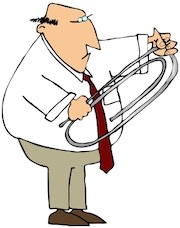 Now that I have a hex beam, what kind of feed line should I use?
Now that I have a hex beam, what kind of feed line should I use?
All hex beams should be connected to the user’s radio by coaxial cable. Your coax feed line should have an impedance characteristic of 50 ohms because this is the closest standard cable impedance to that exhibited by a hexbeam at resonance and is also the output/input impedance of modern transceivers. This impedance requirement rules out open wire or flat transmission lines. The reason for matching impedances is that power is transmitted most efficiently when the source, load and connecting transmission line are all of the same impedance. Matching impedances is what tuners achieve.
That eliminates some popular coax cables such as RG-59 or RG-6 used in cable TV and satellite systems which are closer to 72 ohms and limits you to a choice of several amateur radio cable types, all of which have a characteristic impedance of 50 ohms. Several factors play into the best choice for you and these are, power loss, power handling ability, cost and physical characteristics such as weight, stiffness and durability in moist conditions. Searching the internet for a comparison of cables for ham radio can produce tables or narratives all of which are helpful.
We have assembled a limited table of the most popular cables available to the ham radio market for high frequencies and lower parts of the VHF range such as six meters.
CABLE TABLE
| Type | Loss in dB at 30 mHz | Dia. (in.) | Min Bend Radius (in.) | Power max. (KW) | Typical Cost (ft.) (6/22) |
|---|---|---|---|---|---|
| LMR 400 | 0.8 | 0.405 | 2.5 | 2.8 | 1.18 |
| RG8U | 1.3 | 0.405 | 2.5 | 2.0 | 1.13 |
| RG8X | 1.4 | 0.242 | 2.4 | 1.2 | 0.48 |
| RG213 | 1.0 | 0.405 | 5.0 | 2.0 | 1.09 |
| RG58 | 2.8 | 0.195 | 3.0 | 0.4 | 0.49 |
A few points to think about… Cable thickness and bending means weight and difficulty in handling. The losses in dB should be appreciated in perspective. The difference of 0.1 or 0.2 dB is negligible unless you are into many hundreds of feet in length. If you are going to bury a lot of the cable, there is some cable more suitable for this which is not identified on this page. Do an internet search for this. Clearly, a good cable to avoid is RG 58. A good one to select unless you are into the legal limit is RG8x; easy to handle and light, inexpensive but able to handle most amplifiers.
Don’t use old cable that has been sitting around for years. You have spent a lot of bread for the hexbeam and equipment. Don’t waste it trying to save another buck on cable that might have absorbed moisture or have other issues.
Buy cable with connectors already installed if you can; soldering those connectors is not that hard but you need a heavy duty soldering iron and need to know how to use it.
Wrap those cable connectors with a rubber tape like COAX SEAL. Moisture in the cable is a killer and it takes some effort to seal the cable to keep the moisture out.
 KIO Technology
KIO Technology
